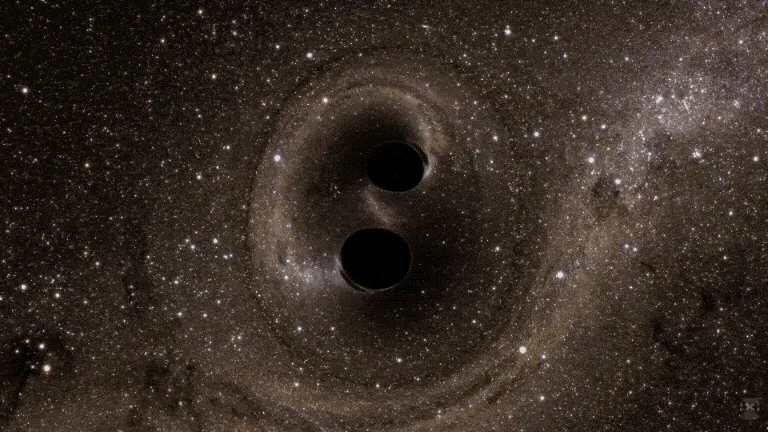
Unraveling Cosmic Mysteries: Scientists Track the 'Natar Kick' of a Newly Born Black Hole
2025-09-15
Author: John Tan
In a groundbreaking discovery, scientists have successfully measured the astonishing recoil velocity generated by the cataclysmic merger of two black holes for the very first time.
Gravitational waves—those elusive ripples in the fabric of space-time first theorized by Albert Einstein—were first detected in 2015. A significant milestone followed in 2019 when researchers captured a gravitational wave signal linked to a dramatic collision between black holes of vastly different sizes. This size disparity led to the formation of a newborn black hole that was propelled into the cosmos, a phenomenon aptly dubbed a "natal kick."
Now, astronomers have decoded the gravitational wave signal known as GW190412, revealing that the violent merger propelled the emerging black hole at a staggering speed of over 31 miles per second (50 kilometers per second). This ferocious velocity allowed the newly merged entity to escape its original cluster of stars, as reported in a study published in the journal Nature Astronomy.
Co-author Koustav Chandra, an astrophysicist from Pennsylvania State University, expressed the significance of this discovery: "It's a remarkable demonstration of what gravitational waves can do."
Understanding the Collision Signals
When black holes spiral into each other, they generate gravitational waves. However, the characteristics of these waves differ dramatically based on the mass disparity between the colliding black holes and the observational angle.
By analyzing these signals from various perspectives, researchers can deduce the direction of the natal kick and calculate its speed. This involves assessing the mass ratio and spin of the original black holes—data extractable from the gravitational waves.
If the recoil is powerful enough to hurl the merged black hole away from its star cluster, it prevents its fusion with other black holes, which could lead to the formation of supermassive black holes. These giants can be anywhere from 100,000 to 50 billion times more massive than our sun, underscoring the need to understand the dynamics of natal kicks.
A Milestone in Astrophysics
The breakthrough in measuring the natal kick followed a 2018 study by co-author Juan Calderón Bustillo and his team, who developed a model based on simulations—before any actual black hole merger data had been observed.
Then, on April 12, 2019, the Advanced LIGO detectors in Louisiana and Washington State, along with the Virgo detector in Italy, recorded the GW190412 signal from two stellar-mass black holes: one weighing 29.7 times as much as the sun and the other at 8.4 solar masses.
Despite this monumental event occurring over 2.4 billion light-years away, researchers used two distinct angles from Earth to track the trajectory of the newborn black hole. It sped away from its dense star cluster at an incredible 111,600 miles per hour (179,600 kilometers per hour), indicating it could become a runaway black hole.
Chandra stated, "This is one of the few phenomena in astrophysics where we're not just detecting something; we're reconstructing the full 3D motion of an object that's billions of light-years away, using only ripples in spacetime."
Looking Ahead: The Next Frontier
The team’s next mission involves searching for additional black hole mergers, utilizing both gravitational waves and visible light observations. This ambitious quest holds the potential to unlock even deeper insights into how these cosmic behemoths evolve and interact.



 Brasil (PT)
Brasil (PT)
 Canada (EN)
Canada (EN)
 Chile (ES)
Chile (ES)
 Česko (CS)
Česko (CS)
 대한민국 (KO)
대한민국 (KO)
 España (ES)
España (ES)
 France (FR)
France (FR)
 Hong Kong (EN)
Hong Kong (EN)
 Italia (IT)
Italia (IT)
 日本 (JA)
日本 (JA)
 Magyarország (HU)
Magyarország (HU)
 Norge (NO)
Norge (NO)
 Polska (PL)
Polska (PL)
 Schweiz (DE)
Schweiz (DE)
 Singapore (EN)
Singapore (EN)
 Sverige (SV)
Sverige (SV)
 Suomi (FI)
Suomi (FI)
 Türkiye (TR)
Türkiye (TR)
 الإمارات العربية المتحدة (AR)
الإمارات العربية المتحدة (AR)